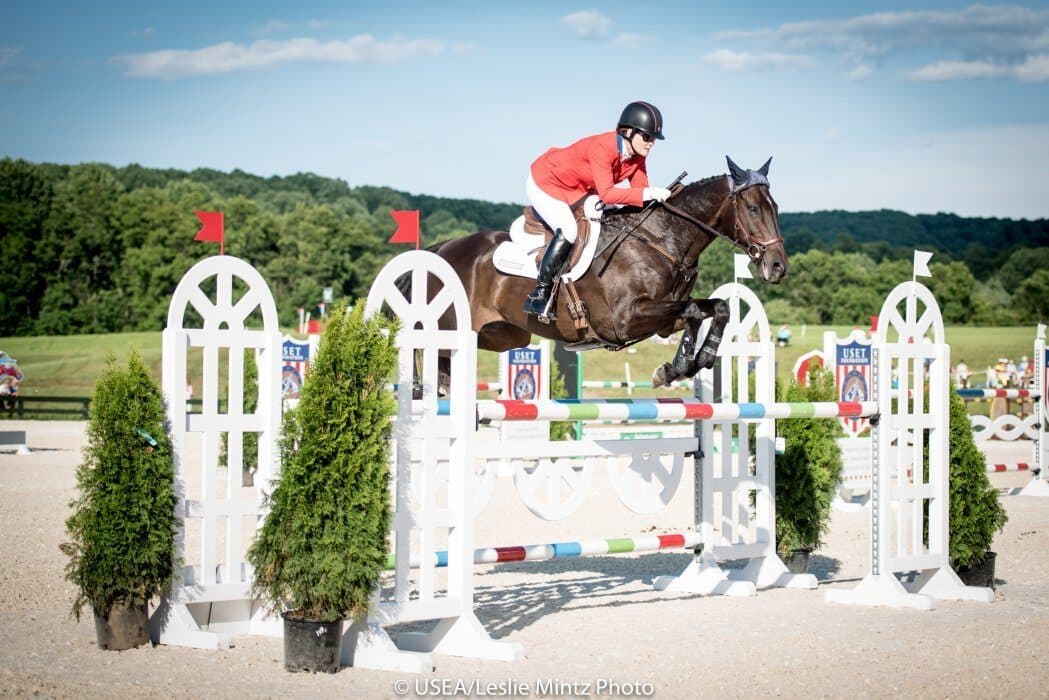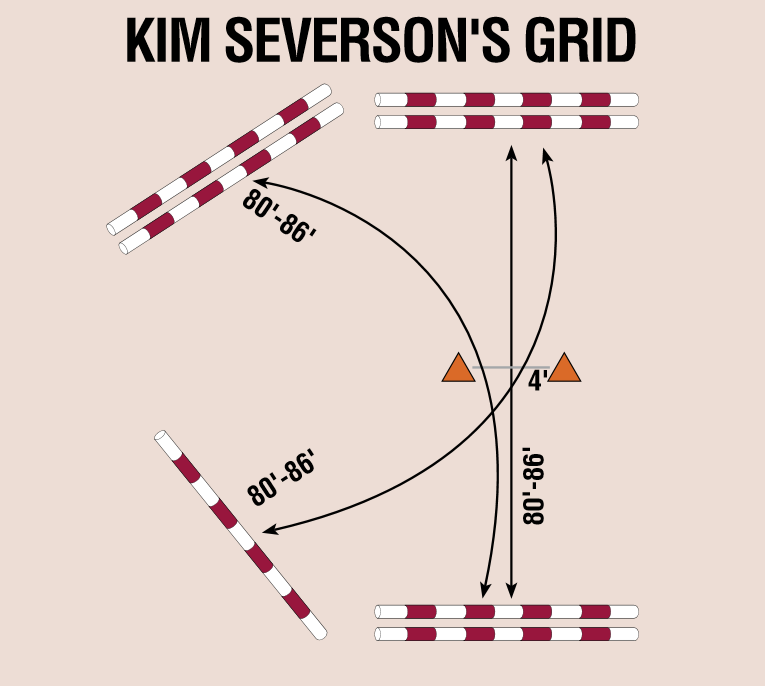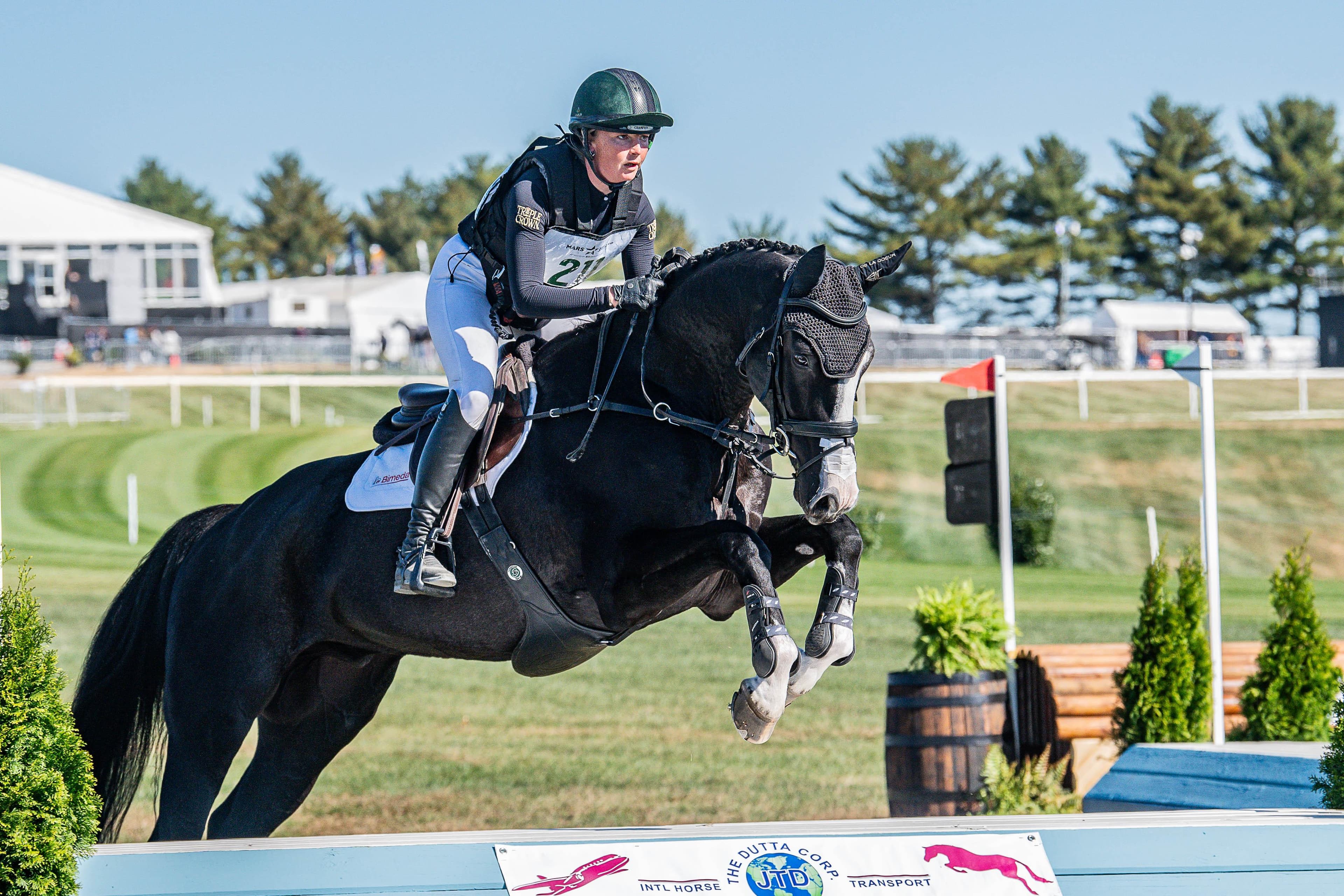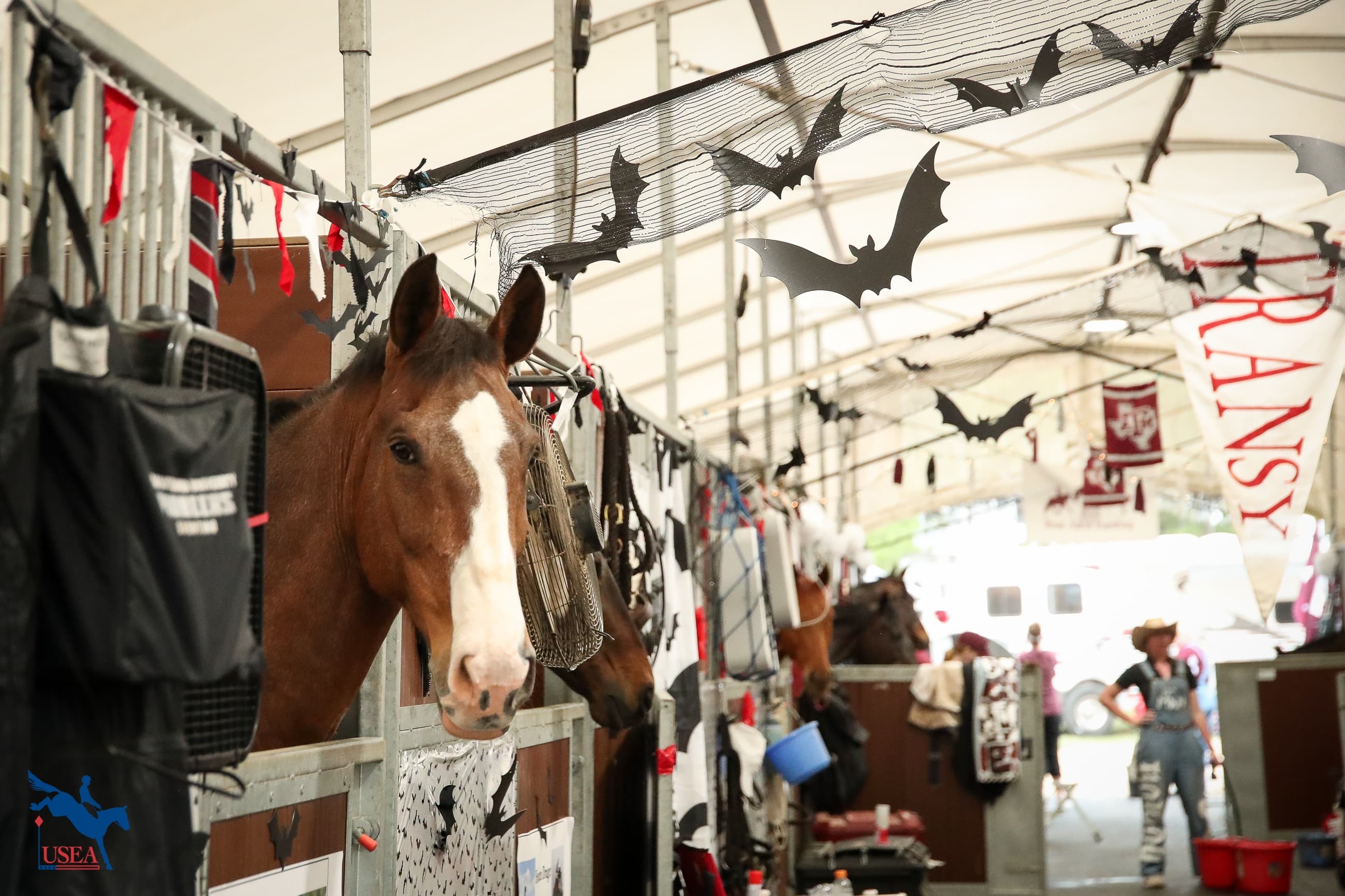Grid Pro Quo with Kim Severson

Why:
If you have been to one of my clinics in the past year, you have probably seen this exercise as it has become a favorite of mine, and I often also have it set up in my arena at home. One of the many reasons why I love this exercise is because not only is it easy for the clinic organizer to set up, but it is an exercise that riders can take home with them and easily set up in their own arenas after the lesson.
While there are only four jumps, there are infinite possibilities within the exercise and you’re able to tackle a variety of issues depending on what the individual horse and rider need to focus on. Additionally, as the skillset of the horse and rider increases, it is easy to increase the difficulty of the exercise.
Having taught for many years now, I have found that one of the biggest struggles for riders is to simply keep riding and keep being effective through an entire exercise. Whether it is at home or at a show, I often see riders collapse on landing and not give their horse clear direction as to what is next. I love using this exercise because I am able to give the riders a clear plan, which teaches them to be a “thinking rider” throughout an entire series of jumps instead of through one line.
Just as this exercise helps the rider become more organized, it does the same thing for the horse, as they are forced to re-group and re-organize during their circles between the cones. Whether you have an Advanced horse that likes to land off of a jump and take over or a greenie that tends to land in a heap, the middle circle helps the horse organize their bodies, and tune back in to the rider, before carrying on to the next obstacle.

How:
When I’m teaching clinics I like to observe the riders warming up at the walk and trot on their own as it gives me a chance to get a feel of how the horse and rider interact with each other, and just allows me to get a general impression of where everyone is in their riding. From there I will start asking the riders to play around with their canter and begin to introduce the first skill needed to make this exercise successful. I will ask the rider to lengthen their canter and then quietly come to a halt from a simple voice command. Depending on if the rider routinely uses voice commands or not, it can take a few times for this new “button” to be installed. Once the horse is halting fairly reliably based on the voice command, I will then have the riders switch direction and again lengthen their canter, but this time collect the canter on a small circle and then halt on the circle, still using the voice as the main aide to create the halt.
Once the riders are warmed up, I will have everyone – regardless of their level – start off by jumping the straight line of oxers. The first time through I will not tell them how many strides they should have, and instead I will ask them to tell me how many strides they got. Then, I will simply have them change direction and canter the straight line of oxers on the other lead and once again ask them how many strides they got. Oftentimes it will be different, which is to be expected as horses, just like people, are dominant on one side. It is our job as riders to try to get our horses to be as even and balanced on both sides as possible, which you will work on throughout this exercise.
The next step will seem overly simple, but can be deceptively hard. I will now simply ask the riders to replicate the striding that they just had. If the striding remains the same, great! That just means that you and your horse communicate well and are on the same page. If the striding is different, it simply means that the riders needs to work on being clear with their horse as to what they’re asking. Thankfully, this exercise has a lot of opportunities to improve those lines of communication.
Before moving on to the next piece of the exercise, I will now ask the riders to fit in an even number of strides based on their particular horse’s stride length between the two oxers. The first step to helping this happen is to make sure that the distance is set up appropriately for the size of the arena, and that the cones are in place from the beginning. If the arena is smaller, the distance should be closer to the 80'. And if the arena is larger the oxers should be set closer to the 86' distance. From here, I will help the riders find the most appropriate canter for their level, which means some riders will need to encourage their horses to open their step, and others will need to encourage their horses to shorten their step. Regardless of which situation the rider is in, the key will be keeping the canter consistent and rhythmic. And the key to a consistent horse is a consistent rider!
Once the riders are jumping the oxers on a straight line in a consistent six strides, I will start to utilize the two cones in the middle of the oxers. To start, I will ask the riders to jump the first oxer and then circle between the cones on whatever lead they land on. Ideally the jumps will be set in the center of the ring, or minimally on the quarter line so that you can approach and leave the exercise from either direction. To start I will have the riders circle in the direction of whatever lead they land on. Then I will start to get picky and dictate the direction of the circle as the rider is approaching the first jump. If the rider lands on the wrong lead, then they should come to a trot before the cones, and pick up the correct lead at the start of their circle. No matter what set up we have, the rider will remain on that circle until they can maintain an even canter, and then continue on to the second oxer. For young horses, it may take a few circles to get organized, but be careful to not circle too much, as young horses often have a hard time maintaining a balanced canter for too long.
Regardless of the level or type of horse, I find that this center circle is extremely helpful. For example, my World Equestrian Games partner Fernhill Fearless (aka Sparky) can often land and then try to take over. The center circle forces him to pay attention and remain rideable. To keep things even more interesting for Sparky, or some of my other more advanced horses, I will land and circle on the counter canter, and then maybe throw in a flying change to the correct lead before continuing on to the next step.
If you are riding on your own, you are really going to need to think about what you need to work on versus what you find easy. If your horse tends to get strong between fences, force yourself to throw in a canter to trot, or canter to walk transition on the circle for a few steps, before picking up the canter again and continuing on. On the flip side, if your horse is slow off your leg, you can ask your horse for a few steps of a medium canter on the circle before continuing on. Remember, you will only get better if you challenge yourself!
Once the riders have mastered the straight line of oxers with the circle in the middle, we will start to incorporate the two jumps on the sides. I will give each rider a course of four to six jumps and incorporate two to three circles in the course. For example, a rider can start with fence #1, circle, and continue right to fence #3, turn left and jump fence #2 with a bending line to #4, and finish by continuing to the right to jump fence #1, circle and finish over fence #2. The possibilities are really endless, so use your imagination to create your own course!
As you can imagine, this is a great exercise for riders who struggle to remember courses because you can really break things down into pieces, and then build on each piece until you have a mini course. As mentioned earlier, I also find that this exercise really helps riders who struggle to keep riding beyond the first jump on course. The circles are perfect for helping these riders re-group and re-organize so that they feel prepared for the next part of the course. This exercise is also really excellent for people that just need to slow their minds down.














